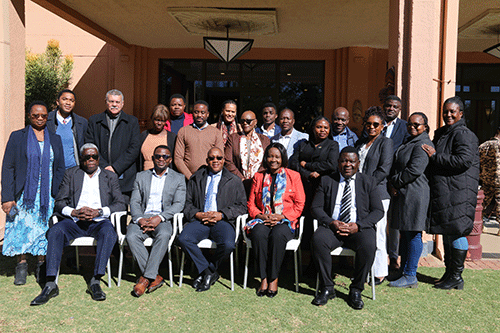As tuberculosis soars, Namibia continues to form part of one of the largest contributors to the high burden on the continent, ranking ninth in the world according to the 2022 statistics by the World Health Organisation.
Health ministry executive director Ben Nangombe said TB is a major public health challenge in the mining sector in the Southern Africa Development Community (SADC) region, and its impact is felt not only by the affected individuals and their families but also by the broader community.
“In Namibia, Tuberculosis continues to be a burden, especially amongst people living with HIV (PLHIV). In 2022, Namibia, with its TB incidence rate of 460 per 100 000 population, was ranked as the ninth highest in relation to its incidence rate of TB in the world, by the WHO,” stated Nangombe.
During the workshop for developing country implementation for mine health and safety standard operating procedures on TB in the mining sector, Nangombe noted that the most common risk factor attributed to the infection in Namibia is HIV infection, followed by malnourishment; excessive intake of alcohol; smoking, and diabetes mellitus.
Nangombe said: “One group exceptionally at high risk of contracting TB is miners. Working conditions inside mines create a high risk environment for TB transmission, resulting from confined and poorly ventilated environments conducive to transmission. The TB incidence among miners is estimated to be as much as 10 times higher than in the populations from which they originate.”
He added that there is a need to have a robust system to compensate ex-miners who contract TB and /or occupational lung diseases while in Namibia.
The workshop, which will run for the week, is in collaboration with the East, Central and Southern Africa Health Community (ECSA-HC) as well as the labour, health and energy ministries.
Stationed in Arusha, Tanzania, ECSA-HC is an intergovernmental health organisation that fosters and promotes regional health collaboration among member states and is tasked with the development of four generic standard operating procedures (SOPs) to improve health and safety in the mining sector.
These SOPs are aimed at guiding member states in prioritising the prevention of effective screening, and treatment of TB in mineworkers.
ECSA-HC’s occupational health specialist Dr Evans Tulisha said the high burden of TB among miners is concerning.
“The drivers of TB in mining are slightly different from the rest of the population. Some key drivers are more exposed to silica dust, the high prevalence of HIV including the environment where our miners are operating from – they are overcrowded,” said Tulisha. He added: “SADC has been aware of these facts and several efforts have been made to address this regional problem. This time around, ECSA-HC with the support from global funds is implementing the TB in the mining sector three, specifically targeting mine health and safety.”
Although Namibia has occupational safety in place and in check, there isn’t something specifically tailored for the mining sector.


